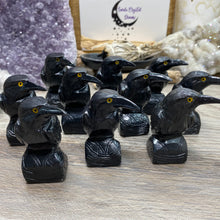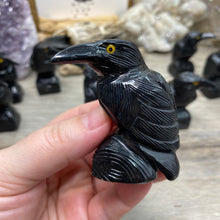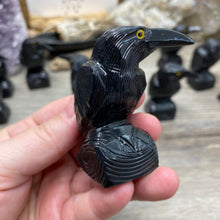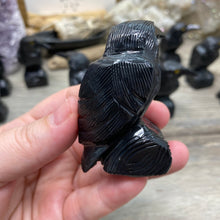
You will receive ONE random selected Raven
Size will vary ~ 1.40" x 1.15" x 2.50"
Weight will vary ~ 95g / 0.209lbs / 3.35oz
Onyx is a variety of Chalcedony, a member of the Quartz family with a hardness of 7. Its crystal system is hexagonal (trigonal). Onyx is defined as a banded Chalcedony in which the lines of banding are parallel. This banded Onyx is frequently used in carving cameos since the layered colors allow the necessary contrast of background with foreground. Black Onyx is most often made by dyeing gray Chalcedony in various ways.
A black base and a white upper layer, however the parallel bands present in between come in many color variations, including brown, white, and grey. Sardonyx, a type of onyx, features a deep reddish-brown hue with white bands. In the jewelry industry, solid or dark colored onyx stones with light banding is quite sought after. Black onyx, the most popular variety, is usually a grey chalcedony that is treated to transform its hue. An original black onyx is very rarely found.
Since ancient times, onyx has been dyed to improve the depth of color, and especially to achieve the much-desired black hue. The treatment usually involves soaking chalcedony in a sugar solution, which penetrates the stone through the fractures present on the surface. It is then treated with hydrochloric or sulfuric acid, which helps carbonize the sugar deposited in the top layers of the stone. In addition to dyeing, onyx is also heat treated to enhance color or eliminate undesirable hues. These techniques are used extensively even today and are known to produce permanent results...











